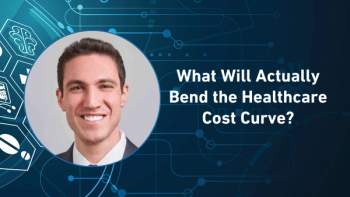
- Pharmaceutical Commerce - July/August 2015
The Phase III pricing experiment
Phase III, as we all know, is the last step before a drug is submitted to FDA for approval; if FDA okays it at that point, it comes to market as soon as the drug sponsor can make the commercialization arrangements. With the recent FDA review committee approvals of new cholesterol-controlling drugs (known collectively as the PCSK9 drugs, and including Parluent from Regeneron Pharma and Sanofi, and Repatha from Amgen), however, the debate over the drugs’ prices preceded the drugs’ medical review.
Estimates range around $1,000 per month for the drugs (although an actual price hasn’t been posted by any of the pharma companies involved), which, these days, isn’t an extraordinarily expensive therapy for a life-saving medication. But here are the qualifiers: many millions of patients take cholesterol-controlling drugs; the condition is chronic, meaning, once it’s prescribed for a patient, the likelihood is that that patient should take the drug forever; and the ability to control cholesterol levels for some 32 million patients already exists through the statins, which are now generic (except for GSK’s Crestor, which goes off-patent, probably, in 2016 in the US). Finally, although many in the healthcare field note that improvement in heart disease management seen in recent years are attributable to the use of cholesterol drugs, there continues to be debate over how much of the improvement is because of the drugs, versus any of a number of other factors.
From early spring this year to immediately after the FDA reviews in early June, there were reports from CVS Health, Prime Therapeutics and others that the drugs could cost the US healthcare system $15 to 23 billion per year. “While these new drugs offer hope to those who aren’t able to effectively manage their cholesterol with existing therapy (i.e., statins), they need to be affordable,” said Patrick Gleason, PharmD, director of health outcomes at Prime. “It’s also reasonable to assume that some prescribers will be interested in using these drugs for additional people with high cholesterol,” meaning that, someone whose cholesterol is being well-controlled by a $10-per month generic statin would get the new drug.
Debates over drug pricing, patient populations and cost effects on overall health system costs are commonplace today, but this is a rare instance of a loud debate before a drug has been approved, and before it’s been priced. (One hint at the potential gold mine for pharma, though, is that Regeneron/Sanofi paid $65 million to Biomarin Pharma merely for a “voucher” to move up in the FDA approval pipeline.)
One indicator of the hyped payer concern is that the drugs (which are monoclonal-antibody-based biologics) require routine injections. Patients simply do not like injections as much as they tolerate taking pills; adherence rates are generally lower when injections are involved—a constant problem for
In a more rational healthcare policy environment, there would be a forthright debate on who needs the drugs specifically (versus who might be prescribed the drugs), and there would also be some discussion of the health benefit of the therapy for patients with uncontrolled cholesterol levels. The outspoken payers seem to be firing across the bows of the pharma companies, warning them to price their drugs conservatively or face heightened public criticism.
All this is probably another ripple effect of the introduction of the hep C therapies over the past 18 months; in the aftermath of those introductions, word came out about significant discounting by Gilead and AbbVie, and the debate has quieted. The big picture is, and will be, who gets to control the debate about a drug’s price, and ultimately, how far our society is willing to go to improve the health of its members.
Articles in this issue
over 10 years ago
Manufacturers can support the ICD-10 transitionover 10 years ago
Building a cold-chain data networkover 10 years ago
Biotech manufacturing capacity is expanding in North Americaover 10 years ago
2015 PDMA Sharing Conferenceover 10 years ago
Moving the needle on diabetesover 10 years ago
Product launch--the 21st-century wayover 10 years ago
Get better at managing clinical trial financialsover 10 years ago
A Conversation with Gary McWalters, TGaS AdvisorsNewsletter
Stay ahead in the life sciences industry with Pharmaceutical Commerce, the latest news, trends, and strategies in drug distribution, commercialization, and market access.




